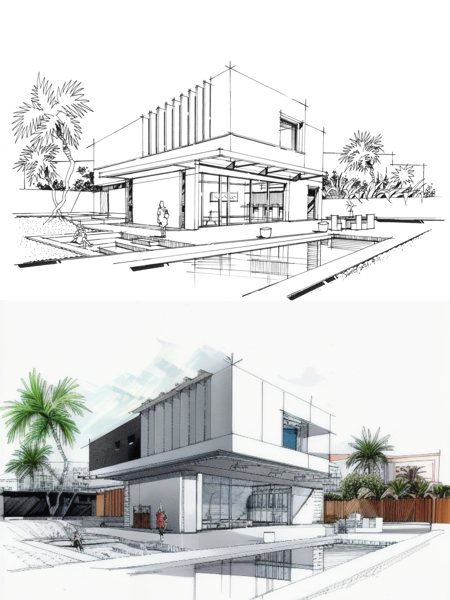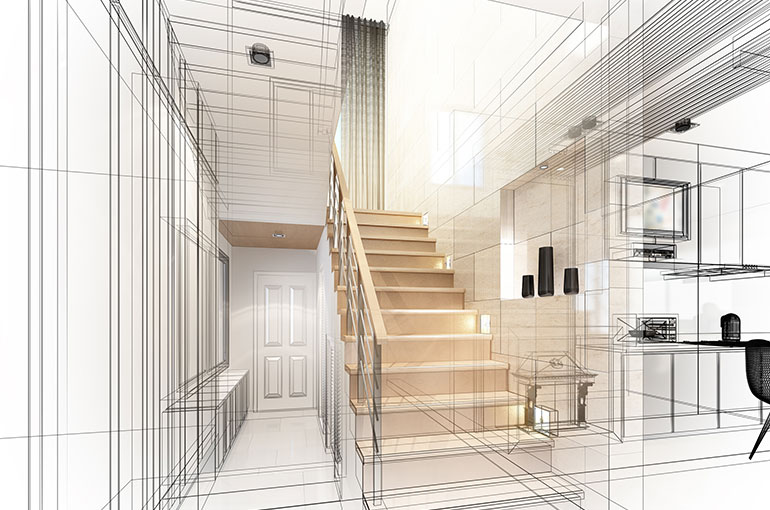Just How CDA Architects Deliver Cutting-Edge Solutions for Sustainable Style
Just How CDA Architects Deliver Cutting-Edge Solutions for Sustainable Style
Blog Article
A Detailed Review of Building Styles and Their Impact on Modern City Preparation and Growth
Architectural styles have long acted as a mirror to the societal worths and technological advancements of their time, playing a crucial function in forming modern-day city planning and development. From the majesty of Neoclassicism to the practical method of Brutalism, each style has presented unique concepts that affect city aesthetics and performance. As modern challenges develop, consisting of sustainability and community needs, comprehending these historic structures becomes important. The resulting dialogue not just informs future style techniques however additionally elevates pertinent questions regarding the equilibrium between heritage and development in our developing metropolitan landscapes.

Historic Summary of Architectural Styles
Throughout history, building designs have actually developed in action to social, technological, and environmental factors. Each duration reflects the prevailing worths, beliefs, and developments of its time, resulting in an abundant tapestry of style that signifies human creativity and adjustment. The ancient people, such as the Egyptians and Greeks, developed fundamental designs that emphasized balance and percentage, serving both practical and aesthetic functions.
As societies transitioned through the Middle Ages, Gothic style arised, characterized by its verticality and intricate detailing, mirroring the spiritual goals of the era. The Renaissance marked a rebirth of timeless perfects, combining art and architecture in innovative ways that influenced subsequent designs throughout Europe.
The Industrial Transformation presented brand-new materials and building and construction methods, triggering motions like Innovation, which challenged traditional kinds and welcomed simplicity and functionality. The 20th century saw a diversification of designs, with Postmodernism reacting against the raw minimalism of its predecessor, incorporating historical referrals and diverse components.
Today, architectural designs remain to advance, driven by globalization and sustainability worries, showing a vibrant interplay in between heritage and development (cda architects). This historical review emphasizes the relevance of architecture as a mirror of social advancement and as a catalyst for urban growth
Secret Architectural Styles Explained
The diversity of architectural styles reflects the myriad impacts that form our built atmosphere, each embodying unique attributes and social relevances. Secret building styles include Classical, Gothic, Baroque, Innovation, and Postmodernism, each standing for one-of-a-kind historical contexts and aesthetic viewpoints.
Classical architecture, rooted in ancient Greece and Rome, highlights balance, proportion, and using columns. On the other hand, Gothic design, growing in the Center Ages, is characterized by sharp arches, ribbed safes, and flying buttresses, creating an ethereal high quality in sanctuaries. Baroque architecture, arising in the 17th century, is noted by majesty, sophisticated decoration, and a dynamic interaction of light and shadow.
Innovation, which acquired energy in the early 20th century, focuses on function over kind, using brand-new materials like steel and glass to develop minimalist frameworks. Postmodernism, reacting versus the austerity of Modernism, accepts eclecticism and historical referral, frequently incorporating spirited elements and irony.
Recognizing these designs supplies insight into the cultural stories and technological innovations of their corresponding eras, highlighting exactly how style serves not simply as a sanctuary, however as a representation of societal values and desires.
Effect On Urban Preparation
Fit the development of cities, building designs considerably influence city planning decisions. The option of building design typically determines the aesthetic appeals, capability, and overall character of city settings. cda architects. Modernism, with its emphasis on minimalism and functionality, encourages open spaces and the integration of technology, shaping city designs that prioritize efficiency and ease of access. On the other hand, conventional styles may highlight historical preservation, leading to urban layouts that keep social heritage and advertise pedestrian-friendly settings.
Moreover, architectural styles can influence zoning guidelines and land utilize policies. Urban coordinators need to consider the dominating building trends when designing areas, making sure that new growths balance with existing structures. This consideration cultivates cohesive city landscapes and improves community identification.
The implementation of specific building styles can likewise affect socioeconomic aspects within a city. As an example, high-end contemporary styles may bring in wealthy citizens and businesses, causing gentrification, while more budget friendly real estate solutions could you could try here focus on practical and lasting styles to suit varied populations. Ultimately, the interaction between architectural you could check here styles and urban preparation produces vibrant cities that show both historical context and modern needs, forming the lived experiences of their residents.
Sustainability and Modern Architecture

Contemporary architectural motions, such as biophilic layout and environment-friendly design, supporter for frameworks that harmonize with their surroundings, using all-natural materials and advertising biodiversity. These styles frequently include sustainable power sources, such as solar panels and wind generators, to decrease dependence on fossil gas and reduced carbon footprints.
Moreover, the integration of advanced innovations, such as smart building systems, improves energy monitoring, maximizing resource usage while making sure resident convenience. Ingenious water management approaches, including rainwater harvesting and greywater recycling, more contribute to lasting city atmospheres.
Significantly, sustainability prolongs past ecological concerns; it includes social and economic dimensions as well. By fostering community well-being and promoting inclusivity, contemporary architectural styles align with lasting advancement goals. The development of building practices proceeds to shape durable cities that not just satisfy the requirements of the existing yet likewise protect the future for generations to come.
Area Interaction in Design
Community engagement in layout functions as a vital bridge in between designers and the populations they serve, making certain that the constructed atmosphere mirrors the needs and aspirations of Homepage its customers. This collective process invites neighborhood members to contribute their understandings and choices, promoting a sense of possession and duty toward the spaces they inhabit.
Reliable area engagement uses different methods, such as workshops, studies, and public online forums, to gather varied point of views. These strategies facilitate a two-way discussion, allowing engineers to comprehend neighborhood contexts while equipping homeowners to articulate their worries and wishes. This inclusivity not only boosts the style quality yet likewise advertises social equity by resolving the special obstacles dealt with by marginalized teams.
In addition, neighborhood involvement can cause innovative options that might not emerge in a conventional layout process. By incorporating local knowledge and social values, architects can produce rooms that reverberate even more deeply with users, boosting usability and sustainability. Inevitably, prioritizing neighborhood involvement in design procedures causes environments that support social interactions, support wellness, and reinforce community ties, therefore playing a critical function fit modern-day metropolitan landscapes.
Verdict
Architectural styles have exceptionally affected modern-day city planning and development, showing advancing social and technical contexts. The integration of historical visual appeals with contemporary requirements promotes city environments that prioritize sustainability and neighborhood interaction. As cities remain to expand and adjust, the continuous discussion in between building heritage and modern-day layout principles will remain vital in producing comprehensive, lively rooms that boost top quality of life and advertise social equity. The future of city growth joints on this unified balance.
Report this page